

It affects almost everything in your life, even when you’re alone.
How to develop a STRONG SENSE OF SELF
7 ways your trades business can market its services
Ways that you’ll market your services to ensure a steady stream of work.
How often do I need to Review Contracts for My Business?
Regularly revisiting contracts ensures they remain relevant and compliant,
5 Advantages to Using Electronic Onboarding

www.aussiepaintersnetwork.com.au

From the Editor
Hey Everyone,
Welcome to the 135 th issue of The Aussie Painting Contractor Magazine.
I hope you have all had a few days break over Easter.
I would like to welcome Mikayla to the team, already in the first month you have bought some ideas and laughs to the office. Keep doing what you are doing.
If you call the office, and she answers the phone, say hi.
March saw more travelling with us continuing early in the month up north, then back to back training since we got back.
Recruitment is growing, if you are looking for staff, reach out to Kate or Mikayla and they will be able to assist.
Members keep an eye out we have some new and exciting things coming over the next month to make your membership’s experience even better.
'Til next month, Happy Painting!!

• Anthony Harris
• Danusha Jayawardana
• David Johnston
• Gregory Harper
• Helen Kay
• Jim Baker
• Leo Babauta
• Nicole Black
• Nigel Gorman
• Robert Bauman
• Ros Cameron
• Sandra Price
Nigel Gorman
8010 CONTRIBUTORS
nigel@aussiepaintersnetwork.com.au 07 3555
EDITOR Nigel Gorman GRAPHIC DESIGNER J. Anne Delgado



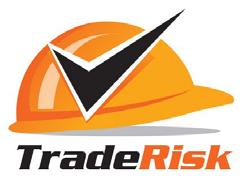





Advertise with us... 1800 355 344 07 3555 8010 info@aussiepaintersnetwork.com.au www.aussiepaintingcontractor.com
Contents
Why get a Painting APPRENTICESHIP?
How to develop a STRONG SENSE OF SELF
Are you the type of boss your team will remember?
7 ways your trades business can market its services

Ever been on a lousy LEADERSHIP COURSE?
Good leadership training needs these 5 ingredients
How Often Do I Need To Review Contracts For My Business?
Apprentice Tradies Insurance
The cost of an Employee “HAVE YOU EVER WONDERED WHY YOU ARE NETWORKING?”

The differences between WAGES, COMMISSION, SALARY, AND BONUSES
5 Advantages to Using Electronic Onboarding
The Joy of small Comforts
Undernourished, stressed and overworked: cost-of-living pressures are taking a toll on Australians’ health
Industry Idiots
Opinions and viewpoints expressed in the Aussie Painting Contractor Magazine do not necessarily represent those of the editor, staff or publisher or any Aussie Painters Network’s staff or related parties. The publisher, Aussie Painters Network and Aussie Painting Contractor Magazine personnel are not liable for any mistake, misprint or omission. Information contained in the Aussie Painting Contractor Magazine is intended to inform and illustrate and should not be taken as financial, legal or accounting advice. You should seek professional advice before making business related decisions. We are not liable for any losses you September incur directly or indirectly as a result of reading Aussie Painting Contractor Magazine. Reproduction of any material or contents of the magazine without written permission from the publisher is strictly prohibited.
Important
Contacts
14 16 24 32 35 38 44 34 45 27 30
06 08 13
Why get a Painting APPRENTICESHIP?
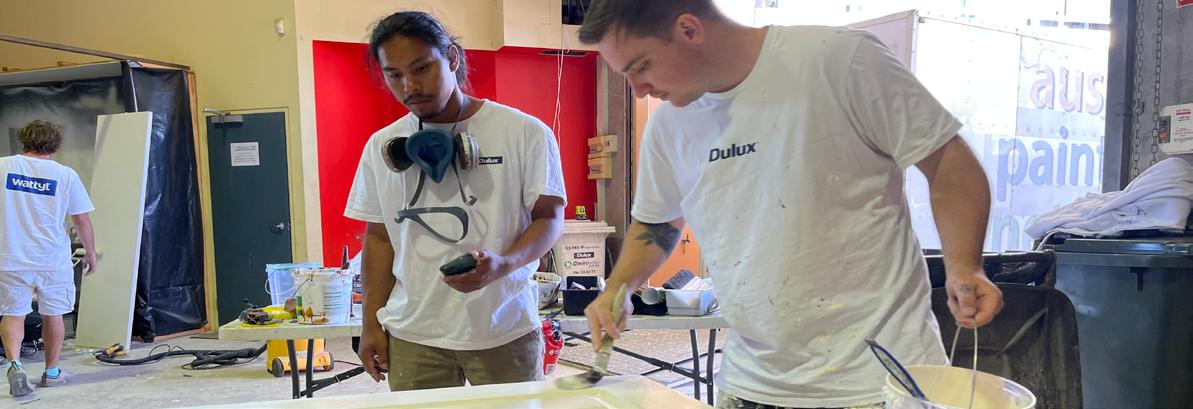
A painting apprenticeship not just gives you a job, it gives you a career. You can go anywhere once you complete your apprenticeship.
You can work for others or you can go into business for yourself.
Its an extremely rewarding job. Where else do you get to create something new for people to enjoy for as long as they choose?
Why become a painter?
I continually get asked why you would want to become a painter.
Well, here’s a few of what my thoughts of the answers are. The job satisfaction that you get from looking at a completed job after all the other trades have been in and you’re the one that finishes everyone’s work that the look that the client has in the smile on their face when they see your finished product.
Painting is an industry is completely different to most other construction trades.
I’ll use a couple of examples:
A Concreter comes in and does the formwork and pours the slab, once they’ve completed that there’s nothing further for them to do on that job.
A bricklayer comes in puts up the walls and lays the bricks to the building or structure that’s being built, once they’ve completed that there’s nothing more for them to do. This continues through all of the trades as you go from the carpenter to the electrician to the plumber to the plasterer and all the other trades on a project, once they’ve completed their job, the work is over and they need to find a new project to work on.
However, the painter comes in at the end of the project and paints it. The project then requires repainting in another 8 to 10 years, this is the cycle. You will find unless there is more work to be done, (example would be an extension) there is not any work for any other of the previous trades except for the painter.
The construction painting industry can be broken into a couple of areas. New and repaint.
The new work market, the opportunity that everything gets built will need to be painted. Let’s use a new house as an example:-
The house will take anything between 3 to 6 months to get built, now the painters at the end of that building cycle so what happens from that point is the painter comes in at the end of the job being months after the concreter has poured the slab. If there is a construction industry downturn the concreters are the first to be affected, the painter is the last.
6 | Aussie Painting Contractor
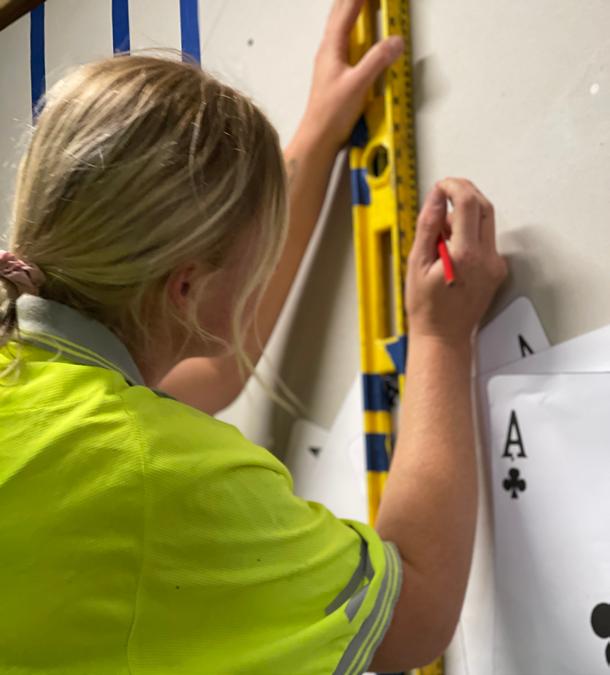
All the other trades start looking for work and as soon as there is work available again all the other trades start working longer days and weekends to catch up on lost income when things were quiet. The painter though just moves to the repaint market until the new work market has started again. The flow of work does not tend to run out for painters in the same way as other trades.

Most construction industry trades are affected by the elements. If worked correctly by the painter, they should have a consistent flow of work. If it’s raining, they should have inside or undercover work.
How much money does a painter earn?
Well, the sky is the limit. If you are working for wages, you could be earning between $28-$45 per hour depending on your experience and entitlements etc.
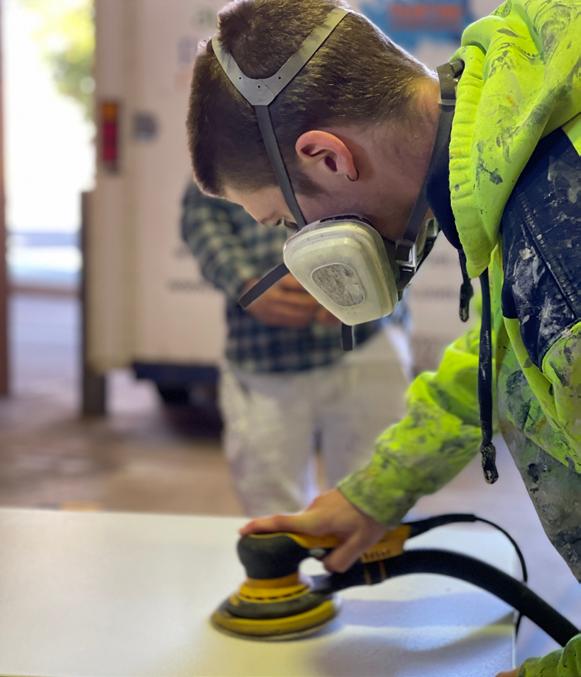
If you are working for yourself you could be earning $100 plus per hour depending on the sort of work you do.
There are just too many variables when it comes to running your own business and I recommend you talk to professionals and get business training to ensure your profitability.
But as a quick example using rough figures.
You can run your own business and have 10 staff, each of which you could be making $20 per hour out of when you take out all your running costs, you could be making $200 per hour.
It all comes down to how you run your business and understanding your companies figures.
Nigel Gorman
nigel@aussiepaintersnetwork.com.au
07 3555 8010
2024 April Issue | 7
How to develop a STRONG SENSE OF SELF

Developing a strong sense of self is one of the most under-appreciated ways to be happy. To have healthy relationships, with others and with yourself.
It’s not often understood, and as a result, problems in this area cause problems in all areas of our lives.
Let me point out just some of the common symptoms of an under-developed sense of self:
• People pleasing
• Conflict avoidance
• Not being honest about how you feel
• Losing yourself in a relationship
• Distancing yourself from your partner when you’re afraid
• Hiding things, cheating on your partner
• Not being able to take care of your needs or emotions
• Being afraid of intimacy or relationships
• Not setting boundaries, feeling overrun or overburdened by others, resenting it
As you can see, the issues come up especially in relationship with others (with your partner, family, friends, coworkers, etc.) … but because of that, it affects almost everything in your life, even when you’re alone.

If you can develop a strong sense of self, you will start to address these problems and more, resulting in a massive transformation of your life.
This is obviously a huge topic that I can’t cover fully in one article, but let’s discuss the essentials.
8 | Aussie Painting Contractor
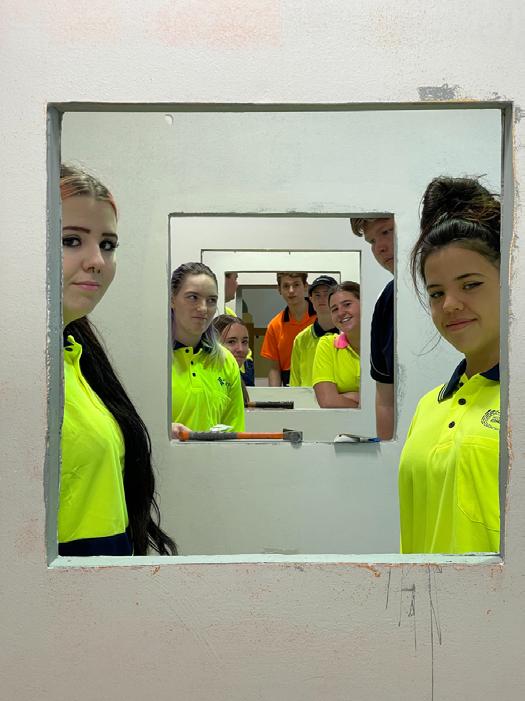
Business Business Breakthrough Breakthrough WEBINAR WEBINAR
tth h
116 6 May 2024 May 2024
The APN Business Breakthrough Webinar, where we will unveil the secrets to success that every painting business needs to thrive.




Practicing in Relationship with Others
It’s best to develop your sense of self when you’re alone — even if you’re in a relationship, or have lots of family or friends around you, spend some time alone each day to practice knowing yourself.
That said, we deepen this work whenever we’re in relationship with anyone else. This can be a romantic partnership, a friendship, a relationship with your kids or siblings or parents, relationships with team members, business partners, etc.
Some ways to practice:
• Notice when you’re seeking validation from the other person. Practice validating yourself instead — acknowledge your light, celebrate your victories.
• Notice when you’re holding yourself back. You might not want to share your feelings with the other person, or perhaps you’re afraid of being honest. This is a withholding of yourself out of fear. When you notice this, attend to your fear. Then see if you can share yourself, at least in little bits. Through this practice, you’ll develop trust to share all of yourself.
• Set boundaries. Notice when you need alone time, and let them know. Notice when you’re saying Yes to things out of guilt, and practice saying No. Notice when you’re resentful about things, and look for a boundary that you can express that won’t make you resentful. Look for where your needs aren’t being honored, and speak up for them.
• Continue to practice your individuality. Just because you’re in relationship with someone
else doesn’t mean you have to sacrifice who you are. Can you speak up for your opinions and desires? Can you have your own activities that are yours alone?
• Use conflicts to grow your sense of self. Every conflict with the other person can be a practice in opening your heart to them, without giving up who you are. And even if the conflict goes badly — let’s say they are shut down and mean to you — you can take some time alone and practice being with your feelings and taking care of your emotions. In this way, even difficult conflicts can be an opportunity to grow closer to yourself.
• Be patient with yourself, because this isn’t easy stuff to practice, and you won’t “get it right” all the time. In fact, there isn’t a right way to do this, it’s an exploration, a journey of self-discovery.
Get support from a friend, a therapist, a coach, whenever you’re struggling with any of it. It’s OK to not be able to do it all on your own.
Above all, rejoice and delight in yourself, no matter how it’s going!
Leo Babauta ZEN HABITS
2024 April Issue | 11



12 | Aussie Painting Contractor th The “Scale Your Painting Business” Workshop Series – your key to unlocking unprecedented profitability for you and your painting business! EXCLUSIVE FOR MEMBERS ONLY EXCLUSIVE FOR MEMBERS ONLY Scaling Your Scaling Your Painting Painting Business Business 1 1 8 8 April 2024 April 2024
Are you the type of boss your team will remember?

We all remember that one (or if you’re lucky more than one) boss that really made a difference to our working life, sometimes for good reasons and sometimes not so good…but let’s stay focused on the positives!
Bosses can play a huge role in how we feel about or work and workplace. If we feel supported, challenged, engaged and understood we enjoy our work more and are more productive. If on the other hand we don’t have a positive relationship with the person or people we report to, our working life can be less engaging and more challenging.
Let’s not forget though that bosses are people too! They don’t always get it right and they don’t know everything – they can’t be everything to everyone. However, some of the things that great bosses do are:
• Provide growth opportunities
• Challenge and stretch us
• Listen and invite feedback
• Lead by example
• Open up new career pathways
• Let us know we matter
• Acknowledge when they do something wrong
• Recognise and reward us
• Forgive our mistakes
• Hold us to account
As people leaders and managers we need to make sure we are creating safe and positive workspaces for out teams. Strong employee engagement, connectedness and team cohesion leads to increased productivity and improved retention. Don’t forget to take the time to reflect on your time as a boss and some of the great things you’ve done for your team members. Equally, look ahead to the type of team and business you want in the future and make sure you are doing what you can as a boss to support your people to deliver your vision. Be a memorable boss!

2024 April Issue | 13
7 ways your trades business can market its services

When you go into business as a tradie, your focus is often on performing your trade to the best of your ability – as it should be. With time, the quality of your work will speak for itself, which is the most valuable testimonial of all.
However, any tradie accountant or bookkeeper will tell you there’s more to it these days. While your good reputation preceding you is undoubtedly essential, there are a few other ways that you’ll want to market your services to ensure that you have a steady stream of work. Read on to learn 7 ways you can market your trades business.
1. Appear in directories
Since setting up a new business is usually a digital experience these days, it’s easy to overlook the step of making sure you appear on a physical list where people can find you. Ensure your business is on whatever relevant trade directories run in your area.
Additionally, make sure you appear in the online equivalent. Yelp, Google, and Facebook each have business directories. And let’s not forget the old standby: the phone book. Yes, they still exist! They are valuable resources for some people looking to hire a tradie.
2.
Have a website
Some website-building platforms are very userfriendly, but if you feel that’s beyond you, hire someone to do it. Almost everyone does an online search before they hire a business, and not having a website is like waving a giant flag that says you’re out of touch, old-fashioned, or possibly not legitimate. Meanwhile, having a website reassures people that you are who you say you are, and can provide the services they need.
3. Leverage social media
Nothing is stronger than a good referral, and people naturally turn to social media to find out what your customers are saying if they don’t know someone who’s used your services personally.
Keep your social media presence strong and engaged. If you’re uncomfortable doing this, hire someone to do it for you. It’s critical when doing business today.
4.
Offer referral promotions
When you wind up with a happy customer, provide them with an easy way to speak positively about you and suggest you to their friends. A card or a thankyou email with a discount code will do the trick.
14 | Aussie Painting Contractor
5. Run ads
Tradie marketing can be tricky because, typically, your services aren’t always needed. But when you are needed, it’s usually urgent.
If your trades business doesn’t appear on the first page of Google, it might be worth your while to take out an online ad. That way, when someone searches for a tradie in your area, your business will appear next to their search. The only way someone can click on your information is if they see it – so make sure they have that chance, whether through an organic search or a paid ad.
6. Make yourself visible in the real world
Make sure your business’s name and logo appear on any equipment you use and make clothes for your team to wear when they’re out and about in the world.
It may be smaller than a billboard, but driving and walking around letting people know who you are, what you do, and how to contact you will go a long way to market your trades business. If people become familiar with your business name, they’ll be more likely to turn to you when they need you.
7. Good old-fashioned snail mail
Believe it or not, print campaigns are alive and well! If you operate a trades business whose services are sorely needed in a specific area, consider making a print ad to pop into mailboxes. A word of warning, though – make sure your print ad is relevant, valuable, and eye-catching. You don’t want to spend money producing something that will immediately go to the recycling bin.
Final Thoughts
Marketing for trades businesses is a lot like any other type of business in that you have to understand your audience and their needs and show up when they’re looking for you. With some research and proactive planning, you can be sure your business will appear in the right place and at the right time.
Need help growing your business? Get in touch with our specialists today or Book a strategy session HERE to see how we can improve your bottom line.
Sandra Price www.tradiebookkeepingsolutions.com.au


Ever been on a lousy LEADERSHIP COURSE?
Good leadership training needs these 5 ingredients
Many of us have done leadership training for work, come back to the office and thought: “That was a huge waste of time”. Or returned with the best of intentions but realised, six months on, we never actually used any of skills we learned on the course.
So, what makes leadership development programs effective?
We spent months researching leadership and management courses, in an effort to develop a new way of thinking about it.
Our new paper, published in the journal Humanities & Social Sciences Communications, argues there are five key ingredients needed to make leadership training worthwhile.
So, what do managers need to know before spending money and time on sending their staff off to leadership training?
Read more: 3 things we need to get right to ensure online professional development works
1. The employee must want to be there
Effective leaders are self-motivated learners. Basically, if the staff member isn’t motivated, they won’t learn. So there is no point in managers sending unwilling staff members off to leadership training.
Our research suggests staff need to self-nominate for leadership development courses. Those who put
their hand up to this kind of training will be intrinsically motivated learners.

There is no point sending a staff member to leadership training if they don’t want to be there. Shutterstock
2. Managers need to let staff use their new leadership skills at work
Many leadership courses give guidance on how to approach certain challenges at work, such as managing conflict or leading a change process.
But this guidance is of little value if the staff member doing the training can’t practise their newfound skills.
Managers need to ensure the skills staff members learn at training can be applied and practised. That means giving your staff the time, opportunities and support to use what they learned at leadership training.
16 | Aussie Painting Contractor

Managers need to give their staff who have done leadership training the opportunity to take on new challenges at work in a psychologically safe context (staff will also need their regular workload reduced so they can do this new work).
For example, the leadership program could run concurrently with a workplace change such as implementing a new system or process. The person doing the leadership training could be supported by their boss to take carriage of this implementation.
3. Managers need to cultivate a continuous learning mindset
Effective learning at work requires a combination of skills. These include:
• self-awareness about one’s learning style
• being open to new learning methods and technologies
• being able to change the way you do things at work when new opportunities arise
• being able to regularly reflect on learning experiences, successes and failures.
In practice, this means managers need to treat leadership training not as a one-off but as part of a broader culture of learning at work.
Managers can support this culture of learning this by, for example, having monthly meetings at which staff can talk openly and constructively about what’s worked lately, what hasn’t, and why. Managers can
also ensure staff are given adequate training on new technologies, so they feel more confident about technological change at work.
Managers may also want to find ways to offer different types of learning opportunities at work. Some staff members will thrive in a group work environment; others will prefer to study a manual themselves, watch an instructional video or do a short online course.
If managers cultivate a culture of continuous learning at work, it means that when staff go off to leadership training, they will be more able to absorb and apply the lessons.
4. Managers need to ensure training is delivered by good facilitators
A crucial feature of leadership training is ensuring there is a high-quality facilitator.
A good course facilitator doesn’t just give a lecture and then answer questions. They also help participants find appropriate applied learning projects, help them learn self-reflection skills, and provide coaching and feedback.
They also play a crucial role in supporting individual and group learning.

2024 April Issue | 17
In practice, this means managers need to do some due diligence before sending staff off to a leadership training course.
That might involve reading reviews, getting feedback from people who have already done the course, and carefully checking the credentials of the facilitator.
5. Organisations need both individual leaders and collective leadership
Successful organisations don’t just have good individual leaders. They also need collective leadership. That means developing a culture at work that values:
• learning
• innovation
• being adaptable
• being able to deal with continuous change.
Managers can foster this culture of collective leadership at work by facilitating honest, safe conversations about innovation and change.
It means making all staff aware it’s everyone’s job to identify ways the organisation can improve, rather than just relying on one or two leaders.
It’s crucial managers find leadership training courses that can embed this message into their training.
Change is all around us, whether that’s climate change, economic change or technological change with the development of AI. The workplaces that will survive and thrive in this era of rapid change are those that take skills development seriously.
Treating leadership training as a box-ticking exercise won’t cut it. Good leadership training is crucial to developing good leadership, but managers need to make sure the course is actually worth it in the first place.
Gregory Harper
Pro Vice Chancellor, Centre for Organisational Change and Agility, Torrens University Australia
Ros Cameron Professor and Director, Centre for Organisational Change and Agility, Torrens University Australia




A D V A N T A 6 [ Eliminate the B.S. in your business and your mates will be asking... "how do you have time to go fishing on the weekend?" Tradies Advantage offers you the COMPLETE FINANCIAL SOLUTION under one roofbookkeeping and accounting at a monthly FIXED price. • Get your invoices out on time • Stop ch asing debtor s and get paid quicker • Better manage rece ipts and paperwork • Lodge your BAS on time - don't cop a fine • Stop mi ssing deductions • Plan ahead and measure how you're going CONTACT US 07 3333 2415 info@tradiesadvantage.com.au 191 Wynnum Road, Norman Park QLD 4170


How Often Do I Need To Review Contracts For My Business?
In this article, we’ll discuss the importance of regular contract reviews to adapt to legal changes, like the recent Unfair Contract Terms updates. Regular reviews, especially with a business lawyer, ensure your contracts remain compliant and protect your interests. This article will guide business owners on the frequency of these reviews and the benefits of professional legal evaluation to navigate these changes effectively.
Introduction to Contract Reviews
At Rise Legal, we understand that staying ahead in business means ensuring your contracts are not just a formality but a foundation for your business’s success and security. Contract reviews are crucial for keeping your agreements aligned with evolving legal standards and business practices. This process involves a thorough examination of your contracts to ensure they are current, compliant, and reflective of your operational realities. Regularly revisiting these documents with a business lawyer can prevent potential disputes and financial pitfalls, securing your business’s future in a dynamic legal landscape.
Impact of Unfair Contract Terms Legislation
The recent amendments to the Unfair Contract Terms legislation (which came into force in November 2023) could significantly impact various clauses within business contracts, especially for small and medium
sized enterprises. These changes aim to provide greater protection against unfair terms that could put one party at a disadvantage. Compliance is crucial to avoid disputes, potential legal challenges, and significant fines.
Our recent blog, Changes in Australia’s Unfair Contract Terms, delves deeper into these legislative changes, offering insights into how they might affect your contracts and the steps you can take to ensure compliance.

20 | Aussie Painting Contractor

Benefits of Regular Contract Reviews
Ensure legal compliance and adapt to new laws
Identify and mitigate potential risks or liabilities
Update terms to reflect changes in business operations or strategy
Strengthen contract enforceability and protection Contract Review Frequency Infographic
Recommended Review Frequency
We recommend conducting contract reviews annually or bi-annually to ensure alignment with current legal standards and business practices. Additionally, reviews should be undertaken following significant changes in your business operations, the legal environment, or industry standards to maintain compliance and effectiveness. This approach helps in identifying potential risks and opportunities for strengthening your contractual foundations.
Role of Business Lawyers
From our perspective, business lawyers play a pivotal role in ensuring your contracts are robust and aligned with your strategic objectives. They offer expert analysis of legal implications within contract language, ensuring clarity and compliance. Moreover, they guide you in harmonising your contracts with both your business goals and the prevailing legal landscape.
Our expertise extends to updating terms, providing your business with enhanced protection against potential legal challenges.
• Expert analysis of legal implications and contract language
• Guidance on aligning contracts with business goals and legal requirements
• Assistance in negotiating and updating terms for better protection
Adopting a structured approach to contract reviews offers a thorough understanding of their pivotal role in business management. Regularly revisiting contracts ensures they remain relevant and compliant, safeguarding your business against legal uncertainties and enhancing operational efficiency. This practice is essential for proactive business management and long-term success.
We advocate for business owners to take charge of their contract management with professional legal guidance. This ensures not only compliance with current laws but also fortifies your business against potential risks. Engaging with legal experts can bring a strategic advantage, keeping your contracts in line with your business objectives while safeguarding against vulnerabilities. For a comprehensive understanding of proactive contract management, we invite you to book a free (no obligation) Discovery Call to discuss your contracts in more detail.
This structured approach offers a comprehensive overview, emphasising the critical role of regular contract reviews in business management.
Remember, while this information provides a general overview, legal advice tailored to your specific circumstances is invaluable. Don’t hesitate to contact Rise Legal for personalised guidance or book in a free Discovery Call.

2024 April Issue | 21

Membership
22 | Aussie Painting Contractor

Packages
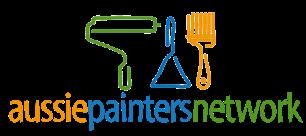
2024 April Issue | 23
Apprentice Tradies INSURANCE

Many people think that only qualified tradesmen need insurance, and that it’s not important for apprentices.
Whilst this may be true in some respects, there are still a number of forms of insurance which apprentice tradies should at least consider.
We have listed some of the most popular forms of tradies insurance below, along with information on whether or not they are suitable for apprentices.
Tool Insurance
We’ll start with the one we are most commonly asked about, which is tool insurance.
As a first year apprentice you may not have any of your own tools, but as the years pass by you will start to build up a good collection, and by the time you’re a fourth year apprentice you might be surprised by just how much money you’ve sunk into your tools.
Building up a valuable collection of tools over a number of years is one thing, but having to replace them all within a week is an entirely different prospect altogether.
Whilst we do recommend that apprentices protect their tools, we are unable to provide insurance cover.
This is because we only deal in business insurance, and as an apprentice you are an employee and not a business.

We recommend speaking with your home contents insurer to see if they are able to add your tools-oftrade onto your contents insurance.
Also note that some car insurance policies provide cover for tools, however the cover is generally limited to less than a thousand dollars.
24 | Aussie Painting Contractor
Public Liability Insurance
Apprentice tradies will almost always be classed as employees, and therefore will be covered under their employees public liability insurance. This means you won’t need your own cover.
Trade Insurance
If for any reason you are being paid under an ABN or are issuing your own invoices then you should speak to us about whether or not you need public liability insurance.
Income Protection
As an apprentice you will be covered by worker’s compensation and should also be eligible for sick leave from your employer, however sometimes the benefits offered by these are insufficient.
If you suffered an injury or illness that left you unable to work for a week or two you will most likely be able to rely on sick leave. But if you were unable to work for a few months or more you could end up in real trouble.
Income protection insurance can replace up 75% of your income for a period of time if you cannot work due to injury or illness, meaning that you can still pay your bills even if you can’t earn a living.
Apprentice tradies will sometimes find that the insurance companies are unwilling to issue cover. Whilst this is the case for some insurers, there are others out there who will offer cover if you are a third or fourth year apprentice.
Sickness and Accident Insurance
A popular form of cover for tradies is sickness and accident insurance. In many ways this cover is similar to income protection, but there are some important differences.
As with income protection, this type of policy can replace a portion of your income if you cannot work.
Life Insurance
Many apprentice tradies are still very young, and the thought of taking out life insurance is probably the last thing on their minds.
Whilst it’s true that life insurance is probably less important for a single apprentice with no children compared to a tradesman with a wife and kids, it is still a form of insurance worth considering.
One of the benefits of being a young apprentice is that your life insurance will be very cheap. For less
than a dollar a day a young tradie can get $100,000 cover, which should be enough to tidy up your debts and cover your funeral expenses.
Sure it’s not something that is nice to think about, but it is good to know that things will be taken care of rather than burdening your family with your debts and other costs.

TPD Insurance
TPD stands for total and permanent disability. This form of insurance is not particularly popular with young apprentices for many of the same reasons as life insurance, but it is still worth considering.
Electrician
A TPD insurance policy will pay you a lump sum if you suffer an injury or illness serious enough that you are deemed unable or unlikely to return to work ever again.
Of course as a young tradie you think you are bulletproof, but you also need to remember that you have a very long period of time to get through if something did happen and you could no longer work.

2024 April Issue | 25


TPD Insurance
TPD stands for total and permanent disability. This form of insurance is not particularly popular with young apprentices for many of the same reasons as life insurance, but it is still worth considering.
Electrician
A TPD insurance policy will pay you a lump sum if you suffer an injury or illness serious enough that you are deemed unable or unlikely to return to work ever again.
Of course as a young tradie you think you are bulletproof, but you also need to remember that you have a very long period of time to get through if something did happen and you could no longer work.
Trauma Insurance
Of all the forms of tradesman insurance available, trauma insurance is probably the least popular with apprentice tradies.
This form of insurance will pay you a lump sum if you are diagnosed with a critical illness. The most common claims for trauma insurance are for heart attack, cancer and stroke, so you can see why it’s less popular with young tradies.
Although the big three conditions may not be common for younger tradies, there is one condition that is very relevant for tradesmen, and that is melanoma.
The coverage offered for melanoma does differ between the different insurance companies, but it’s
certainly a useful cover to have for tradies who spend most of their time in the sun.
Do Apprentices Need Insurance?
The fact is that many apprentices choose not to bother with any form of trade insurance.
There are various reasons for this, with one of the major reasons simply being that apprentice wages aren’t exactly huge, and paying extra insurance premiums is not a particularly attractive thought!
Do apprentices need insurance? Technically the answer would be no, but technically you don’t have to insure your ute or your home either, but most people still choose to do so.
If you’re an apprentice and would like to know more about insurance for tradesmen, our experts can talk to you about a budget package that can give you some level of protection without costing the earth.
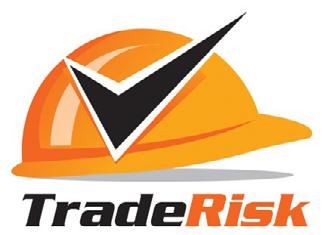
2024 April Issue | 27
THE COST OF AN EMPLOYEE
I receive a lot of questions and have read many posts regarding employee wages, entitlements and hourly rates etc, so I want to explain it to you as best as I can.
Let’s start with the ‘Basic Wage’ and entitlements for a painter from the ‘Fair Work Wage Line’ website. (Please check your individual State for these Awards also).
The Cert 3 tradesman award Hourly Rate is $26.17, plus 17.5% Holiday Loading, 10.5% Superannuation and $20.32 Travelling money (per working day).
There are 260 Working Days in a year with 53 days consisting of Annual Leave, Public Holidays, Sick Days and Rostered Days Off. This equates to a yearly wage to the employee of $65,606.72. When 'Workers Compensation' is added (8% for example), the cost to you as the employer comes in at $34.07, based on the 260 Days Employed, or $42.79 on 207 Productive Days. (I have a Power Point Presentation on the above if you would like it sent to you).
Now many employers don’t like the hassle of dealing with RDO’s and Travelling money and prefer to pay extra in the employee’s wage.
So, what does this work out at?
It is illegal to ‘disadvantage’ an employee, so it’s important that you get this right.
If the employee now works on their RDO days, it means they’re physically working an extra 13 days of the year, so instead of 207 working days, it is now 220. These 13 days must now be included in their total wage. On top of this, they are also entitled to an extra 13 days of travelling money.
The employee’s wage now equates to $29.65 per hour and includes RDO’s worked on and travel money. Their total wage package, (based on the extra days
worked and travelling), now comes to $69,064.93 (this also includes Holiday Loading and Superannuation). The total cost to you as the employer on their ‘Productive Days’, works out to around the same, $42.38.
Remember the above calculations are based on ‘Basic Wage’ amounts, so what happens if you pay them more?
By increasing the ‘Basic Wage’ of $26.17 to $30 per hour ($3.83), the ‘Productive Hourly Cost’ will jump from $42.79 to $48.61 ($5.82). With the employees that have RDO’s and travelling included in their wage, if you increase their hourly rate from $29.65 to $35 an hour, the ‘Total Hourly Cost’ on ‘Productive Days’ will go from $42.38 to $50.03. So, as you can see here in this last example, when you include a $5.35 wage increase, it affects the Holiday Loading, Superannuation and Workers Compensation also, and is in actual fact now costing you $7.65.
Compare these figures to your 'Hourly Charge-Out Rate’ and see how much profit you are making from your employees. If you're not making much and they take one hour longer to do a job each day for instance, then you are losing money.
Remember also from next July, you will be paying another 0.5% on Superannuation so budget for that before the time comes around.
All these figures and much more are achieved through ‘My Hourly Rate Calculator’ on my website below.
Jim Baker www.mytools4business.com
28 | Aussie Painting Contractor

2024 April Issue | 29

“HAVE YOU EVER WONDERED WHY YOU ARE NETWORKING?”
This is a question I ask people quite often. I believe, if you are not aware of why you network, your outcome will not be what you are hoping and wishing to achieve.
Is your reason to become a better networker for career building, developing a higher profile, earning more money/financial gain or to gain influence in your community, job or business network?
This is an important question. If you understand why you are networking, you will find that you will have a clearer vision of what you want.
By not understanding this and what you expect to gain, you will not move forward. Word-of-mouth marketing has been around forever and is a powerful way to build your business. I believe, done correctly, it is the best way to build the relationships and business you want for the future.

If for you, networking becomes a natural way of life, it becomes the most successful way to do business. It is necessary for you to learn the basics if you wish to be successful though. It is all about relationship building. You will find that after a while you don’t even think about what you are doing. Networking should always be a win-win for all parties, so always repay appropriately favours extended to you.

Remember, when you give a referral, notify the receiver and the person who is being referred so they are both on the same page. Email is the easiest and quickest way to do this. It is important to give information as to why you are referring the person so that both are aware of what has been passed on. This helps both sides to have more of an idea of the relationship with the referrer. Always make it clear what your relationship is with the person you are referring, for example, they are a client, a personal friend, someone I feel that you will have a synergy with, you have or haven’t done business with them etc.
One of the most important things to remember is that you need to be seen, become known and move into the marketplace that is appropriate to you, at your own pace, always keeping in mind why you are doing it. Attend one or two specific networking groups and become known as a ‘regular’. People then perceive you as stable, reliable and trustworthy will then do business with you. It is important you find your niche market, so the types of events you attend must be appropriate for your needs.
Remember, that the people you are looking to do business with are looking for you too!
2024 April Issue | 31
The differences between WAGES, COMMISSION, SALARY, AND BONUSES

There are a few different methods that employers use to pay their employees, and while they may have similarities, they each also have their own implications for your business and its employees. On top of that, there may be a blended model at play, in which you offer two types of compensation at once, such as a wage and bonuses.
How you pay your employees will impact your finances and your reporting requirements.
Read on to learn the differences between the main ways of earning money in the workplace.
Wages
Most entry-level positions offer an hourly wage in exchange for work. An hourly wage might be $10. So if the employee works 8 hours that day, they would be compensated $80 for that day.
There are minimums set by law which vary depending on where the business operates. Typically, the minimum wage is directly related to the cost of living in that area.
Generally, there are a set number of hours that can be worked in a week, and working beyond that maximum entitles the employee to a higher rate of pay. There may be premiums associated with working undesirable shifts, or an even higher rate of pay that employees are entitled to for working on holidays.
Because of the number of hours worked, the specific days worked, and overtime, the amount an employee will potentially earn each year can vary widely when paid with hourly wages.
Salary
A salary is the standard compensation for management and upper-level positions. It is an agreed-upon annual total, where a certain number of hours worked per week is expected – typically 35 to 40. There will be other requirements outlined, such as how many days per week are expected.
Depending on the schedule, the total salary is divided into equal payments for each pay period. Often, a salary is agreed to as an annual figure, with each payment equally divided by the number of payments. If you pay an employee a salary of $60,000 a year once a month over 12 months, you would pay $5,000 each payment, not accounting for any deductions.
How a company manages its payment schedule will vary from company to company.
Any other pay, such as overtime worked, commissions earned, or bonuses, are separate from salary. Many companies don’t offer overtime pay for extra hours worked, but they may offer commissions or bonuses for performance.
32 | Aussie Painting Contractor

Commission
This is a form of compensation that is based on performance. The amount an employee receives can vary drastically, depending on how well they perform in a pay period.
Commission is typically a calculated percentage of the value of goods or services sold. It is meant as an incentive to drive employees to make sales. For example, you may offer to pay $1,000 as a commission for each car sold. An employee who sells 10 cars in the pay period would receive $10,000 commission.
All earnings made by commission are counted as taxable income.
Some salaried or hourly positions offer a commission on top of regular earnings. However, some positions, especially those in sales, can be based solely upon commission. This means that if the employee doesn’t sell anything, they don’t get paid.
Bonuses
A bonus is a compensation type that is not guaranteed. It is usually tied to some kind of company goal, usually driven by sales or performance. A bonus might be awarded on an individual basis, or for a team or other work group.
The idea behind a bonus is to create an incentive to
meet a specific goal. It is rewarded when the goal has been reached, or evaluated at specific times. Bonuses are offered on top of a wage, salary, or commission.
Because of the unofficial structure, bonuses are loved by some and loathed by others. It can be motivating to receive a bonus, as it’s completely separate from what an employee already earns. However, it can also leave employees feeling disgruntled if they feel they weren’t supported well enough to reach the goal and therefore missed out on the bonus. If the goals are unrealistic, employees may also struggle with motivation even if they are offered a bonus.
Final Thoughts
Whatever payment structure your company follows, make sure you are consistent and fair as an employer, and follow all applicable laws. Contact us to learn more about different forms of compensation and what they mean for your bottom line.
Sandra Price www.tradiebookkeepingsolutions.com.au
2024 September Issue | 33
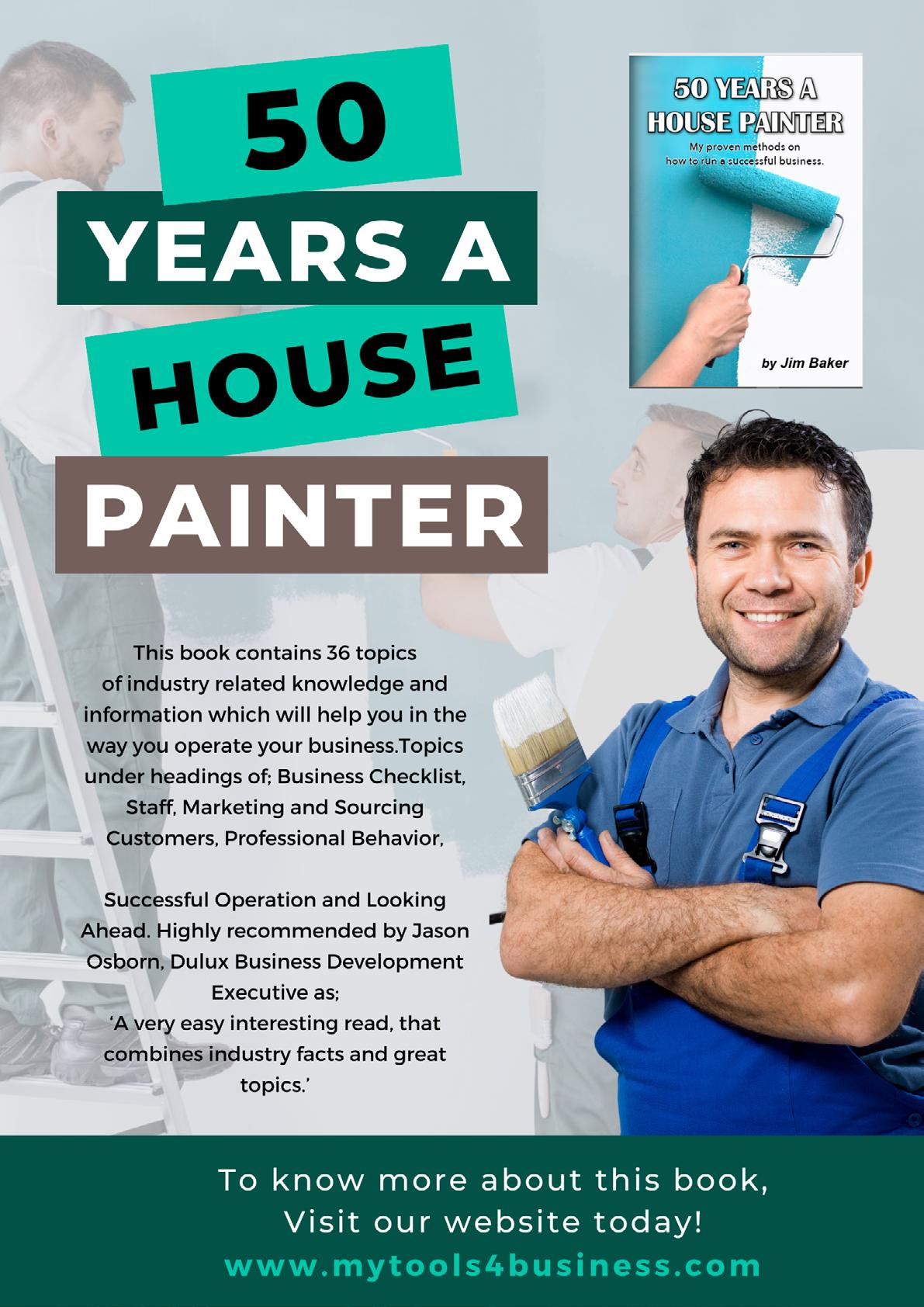
5 Advantages to Using Electronic Onboarding

The process of onboarding employees is often lengthy, but it’s important. New hires need to learn your company’s culture, policies, and procedures. You also need to get some critical information from them so that they can legally work for you.
The onboarding process is typically long and a little dry. It may include training, equipment distribution, benefits orientation, and security policies, just to name a few.
There are many benefits to switching this traditionally paper-heavy and arduous process online. Read on to learn 5 great reasons to make the switch.
1. Make a great first impression
Some surveys suggest that up to 50% of new hires leave their new role within a few months. Switching to an electronic onboarding system is one way to combat this statistic.
When you create your onboarding content, you have a chance to knock that first impression out of the park. You know it will be a consistently great first impression with every employee, too.
It’s a great opportunity to decide how you want to come across to your new hires. You can then finesse the content until you have it right. Imagine if
you could make a perfect impression every time you spoke to someone for the first time. Electronic onboarding allows you to do just that.
2. Save time
We all know how much effort it takes to onboard new employees. Often, the first day on the job is spent almost entirely on paperwork. The content is dry and the day is boring. This isn’t the best introduction to your company culture.
By switching to electronic onboarding, your new employees can do that “pre-boarding” work before they arrive. They can use the device of their choice and remain in the comfort of their own home.
When they arrive at work, they can jump right in to spend time connecting with their new colleagues and learning the actual job.
It’s a huge time-saver for your HR department, too. Instead of pushing papers for the first few weeks, deploy the content with the push of a button. You’ll also receive an alert if something is incomplete.
The automation of electronic onboarding means that nothing will be overlooked. Instead of filling out forms, your HR employees can spend time getting to know your new hires.
2024 April Issue | 35
3. Increase engagement and accountability
When your onboarding process is electronic, you can easily see if anything is incomplete. Knowing which modules aren’t done yet makes it easy to follow up with an employee.
It can also give you some valuable insight about which parts aren’t working so well. If a lot of people get stuck on the same module, it’s a good indicator that it might need some improvement.
Onboarding content can be quite dry, but it’s critical. It’s helpful to know who’s done what, and what content needs some more attention.
easier than you might think to lose track of a sheet every once in a while.
It also protects your company’s data. When an employee takes a paper packet away, there is always the risk that it could get lost. When everything is online, it stays secure. That protects everybody’s interests.
Final thoughts
There aren’t any real downsides to switching to an electronic onboarding process. If you’re interested in saving time, money, and energy, while also driving up employee engagement and retention, it’s a good idea to consider making the switch.

4. Custom content
There is a lot that goes into learning a new job, and not all employees will need the same things. With electronic onboarding, you can send the necessary paperwork to all employees. And then you can send role-specific modules to those who need it.
Tailoring everyone’s onboarding to their needs saves time, money, and paper. There’s no need for everyone to go over everything. Delivering just the necessities for each employee keeps interest and engagement high. It takes less time, too.
5. Protect data
Employee privacy is a top concern. With electronic onboarding, you eliminate the risk of losing any personal data. With so much paperwork to complete, it’s
Feel free to arrange a FREE No-Obligation Meeting with me to help you with a business systems check and map out a way to get started. Call my office on 07 3399 8844, or just visit our website at www.straighttalkat.com.au and complete your details to request an appointment.
 Copyright © 2024 Robert Bauman.
Copyright © 2024 Robert Bauman.
36 | Aussie Painting Contractor

The Joy of small COMFORTS

Some days, I’m in need of some comfort. I’m tired, emotionally drained, or just feeling besieged by the world.
On these days, I try to recognize my physical, mental and emotional state, and I ask myself what I need.
Just noticing is a big step for most of us. We often don’t recognized when we’re feeling drained or a bit battered by life. We just focus on what we think we need to be doing, and just push through. This might feel necessary, but it’s rarely helpful, because we’re just forcing ourselves to act when we’re depleted or feeling confronted.
So if we notice … we might pause. Take a breath or two. Check in with ourselves. What do I need.
Sometimes, for me, it’s a little rest. I’ll take a nap. This is a beautiful little comfort I give myself, and I feel much refreshed after.
Today I’d love to advocate for small comforts. A nap is a great example, but there are so many more.
Here are some of my favorite small comforts:
• A minute of breathing and being present to what we’re feeling.
• A luxurious stretch.
• A hot cup of tea.
• A hot shower.
• A relaxing walk in nature.
• Some berries, or another delicious fruit.
• A hug from a loved one.
• A short meditation session.
• A spoonful of peanut butter.
• Curling up with a good book.
• A massage.
• Sitting in a hot tub.
• Sitting with someone and listening to music.
• Having a square or two of dark chocolate.
What are some of yours?
As we talk about small comforts, I should note a few important things:
First: this is about small comforts, not about overdoing it. While it might seem weird to talk about overdoing
38 | Aussie Painting Contractor

comforts, for many of us, we can definitely over indulge to a point approaching addiction. For example, if you enjoy the small comfort of a glass of wine … you can overdo it by feeling like you need to have wine whenever you’re feeling stressed. Then it can move to needing to have 5 glasses of wine a day. The same kind of thing can happen with any kind of substance (weed, cigarettes, etc), with food, with watching TV or playing video games, and so on. There is nothing wrong with any of these – just have them in nice small doses, and use other things to find comfort, not just one thing that you become reliant upon.
Second: I also advocate facing discomfort when we’re able to. This is not about always being in comfort. That leads to a contracting from life. I’m a strong advocate of learning to be with more and more of life, including what’s uncomfortable. That’s how we grow. That said … we can’t do that all the time. Sometimes we need some nurturing, replenishing, revitalizing. Sometimes we need comfort. This isn’t an allor-nothing kind of deal – we can find a balance that’s right for ourselves.
Third: Let go of guilt. Despite what I said in the first two, this is not about “guilty pleasures,” because comforts when we need them are healthy and wonderful. See if you can give yourself full permission to savor these small pleasures.
Fourth: Really be present and enjoy them. Eating a treat isn’t much of a comfort if you are distracted on your phone. Let yourself fully savor and find the wonder and deliciousness in small comforts.
I hope you’ll give yourself permission to take care of yourself when you need it. Here’s to the small comforts in life!
Leo Babauta ZEN HABITS
2024 April Issue | 39

Undernourished, stressed and overworked: cost-of-living pressures are taking a toll on Australians’ health
For the past few years, it has been impossible to escape the impact of inflation. Meeting our most basic needs – such as food, housing and health care – now costs significantly more, and wage increases haven’t kept up.
There are signs relief could be on the horizon. Inflation has fallen to its lowest levels since January 2022.
But Australia now also finds itself in the midst of an economic downturn, putting further pressure on households.
Read more: You don't have to be an economist to know Australia is in a cost of living crisis. What are the signs and what needs to change?
Rising prices have an obvious negative impact on our financial health. But they can also have a profound effect on our physical and mental wellbeing, which is often overlooked.
Australians may continue to feel the health effects of high inflation for quite some time.
It’s costing more to live well
Between March 2021 and March 2023, the price of goods and services rose substantially, marking a period of high inflation.

Worryingly, the prices of basic needs that are important for staying healthy – nutritious food, health care, housing and utilities – rose between 11% and 36%.
Who is affected the most?
Higher prices on essentials are virtually impossible to dodge, but they impact certain groups of people more than others.
Wealthier households have managed their higher expenses by cutting back on discretionary spending and dipping into savings.

40 | Aussie Painting Contractor

Financial stress affects our health
Our research shows that high inflation has a range of effects on people’s health.
These effects fall into three main groups: material hardship, psychosocial, and behavioural.
1. Material hardship
People facing material hardship can’t meet their basic needs because they can’t afford to pay for them.
Material hardship can present itself in a variety of ways:
food insecurity – not getting adequate nutrition energy poverty – struggling to pay for electricity and gas
deferred health care – putting off medical treatment housing insecurity – struggling to find a stable place to live.
Between August 2022 and February 2023, when inflation hit its highest levels in 33 years, over half (53%) of surveyed Australians reported struggling to afford their basic needs.
Finding ourselves in this situation can have far-reaching implications for our health.

A man and woman sit in a brightly lit doctor's waiting room
More Australians are putting off health care for financial reasons, which puts them at greater risk down the line.
ArtmannWitte/Shutterstock
For example, food insecurity is linked to an increased risk of poor nutrition, obesity and chronic illness, as
households facing cost-of-living pressures shift towards cheaper, lower-quality food options.
Energy poverty is linked to physical and mental health problems as people struggle to keep warm in wintertime, and cool in the summer.
Delaying health care increases the risk of facing severe health problems, staying in hospital for longer, and being admitted to the emergency department. This isn’t just worse for individuals, it’s also far more costly for our health care system.
2. Psychosocial effects
Psychosocial effects are the ways in which cost-of-living pressures impact our mind and social relationships.
Difficulties in meeting our basic needs are strongly associated with increased levels of psychological distress, including symptoms of anxiety and depression.
This impact can worsen over time if individuals experience sustained financial stress.
By undermining our ability to work well, the psychosocial effects of prolonged financial stress can initiate a “vicious cycle”, leading to reduced productivity and lower earnings.
Financial stress can also have a detrimental impact on spousal relationships, which can affect the mental health of other household members such as children.
3. Behavioural effects
Cost-of-living pressures can also cause a number of changes in the way we behave.
For many, these pressures have become a reason to work longer hours and gain additional income.
Last year, Australians collectively worked 4.6% longer, an extra 86 million hours.
But working longer hours reduces people’s overall health, especially among parents of young children facing greater time constraints.
It also leaves less time for activities that help to keep people healthy, such as getting regular exercise and cooking healthy meals.
42 | Aussie Painting Contractor
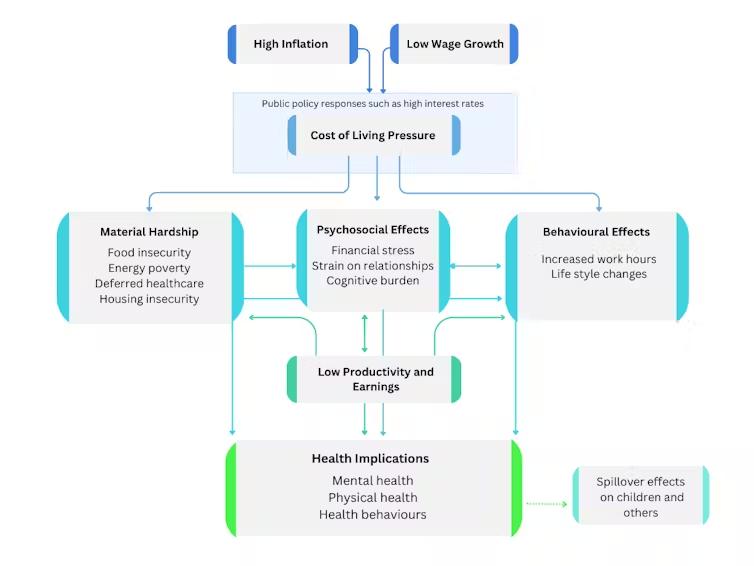
There are a number of pathways between high inflation and poor health outcomes. Authors’ creation.
How
can policymakers respond?
In theory, the Reserve Bank of Australia’s primary tool for combating inflation – raising interest rates – should help. By reducing aggregate spending in the economy, it is designed to put downward pressure on prices.
But by bluntly increasing the cost of borrowing, it also puts significant short-term financial pressure on both lower-income mortgage holders and renters.
Better acknowledgement of this fact, and of inflation’s broader impact on people’s physical and mental health, would be a great start.
When formulating policy responses to high inflation, governments could factor health and wellbeing impacts into their assessment of the trade-offs between alternative policy responses.
This could help minimise any policy’s long-term negative health consequences and its impact on the health care system.
Policymakers could also focus on making sure affordable and timely access to health care, especially mental health support, is made available to those most vulnerable to cost-of-living pressures.
Nicole Black
Associate Professor of Health Economics, Monash University
Anthony Harris
Professor of Health Economics, Monash University
Danusha Jayawardana
Research Fellow in Health Economics, Monash University
David Johnston
Professor of Health Economics, Monash University
2024 April Issue | 43

44 | Aussie Painting Contractor
IMPORTANT Contacts
Aussie Painters Network
aussiepaintersnetwork.com.au
National Institute for Painting and Decorating painters.edu.au
Australian Tax Office
ato.gov.au
Award Rates
fairwork.gov.au
Australian Building & Construction Commission www.abcc.gov.au
2024 April Issue | 45
Mates In Construction
Workplace Health and Safety Contacts Cancer Council Australia Ph. 0430 399 800 Ph. 1300 319 790 Ph. 13 72 26 / Ph. 13 28 65 Ph. 13 13 94 Ph. 1800 003 338 Ph. 1300 642 111 Comcare WorkSafe ACT Workplace Health and Safety QLD WorkSafe Victoria SafeWork NSW SafeWork SA WorkSafe WA NT WorkSafe WorkSafe Tasmania comcare.gov.au worksafe.act.gov.au worksafe.qld.gov.au www.worksafe.vic.gov.au www.safework.nsw.gov.au www.safework.sa.gov.au commerce.wa.gov.au/WorkSafe/ worksafe.nt.gov.au worksafe.tas.gov.au 1300 366 979 02 6207 3000 1300 362 128 1800 136 089 13 10 50 1300 365 255 1300 307 877 1800 019 115 1300 366 322 ACT NSW NT QLD SA VIC WA actcancer.org cancercouncil.com.au cancercouncilnt.com.au cancerqld.org.au cancersa.org.au cancervic.org.au cancerwa.asn.au (02) 6257 9999 (02) 9334 1900 (08) 8927 4888 (07) 3634 5100 (08) 8291 4111 (03) 9635 5000 (08) 9212 4333
www.mates.org.au



































































 Copyright © 2024 Robert Bauman.
Copyright © 2024 Robert Bauman.









